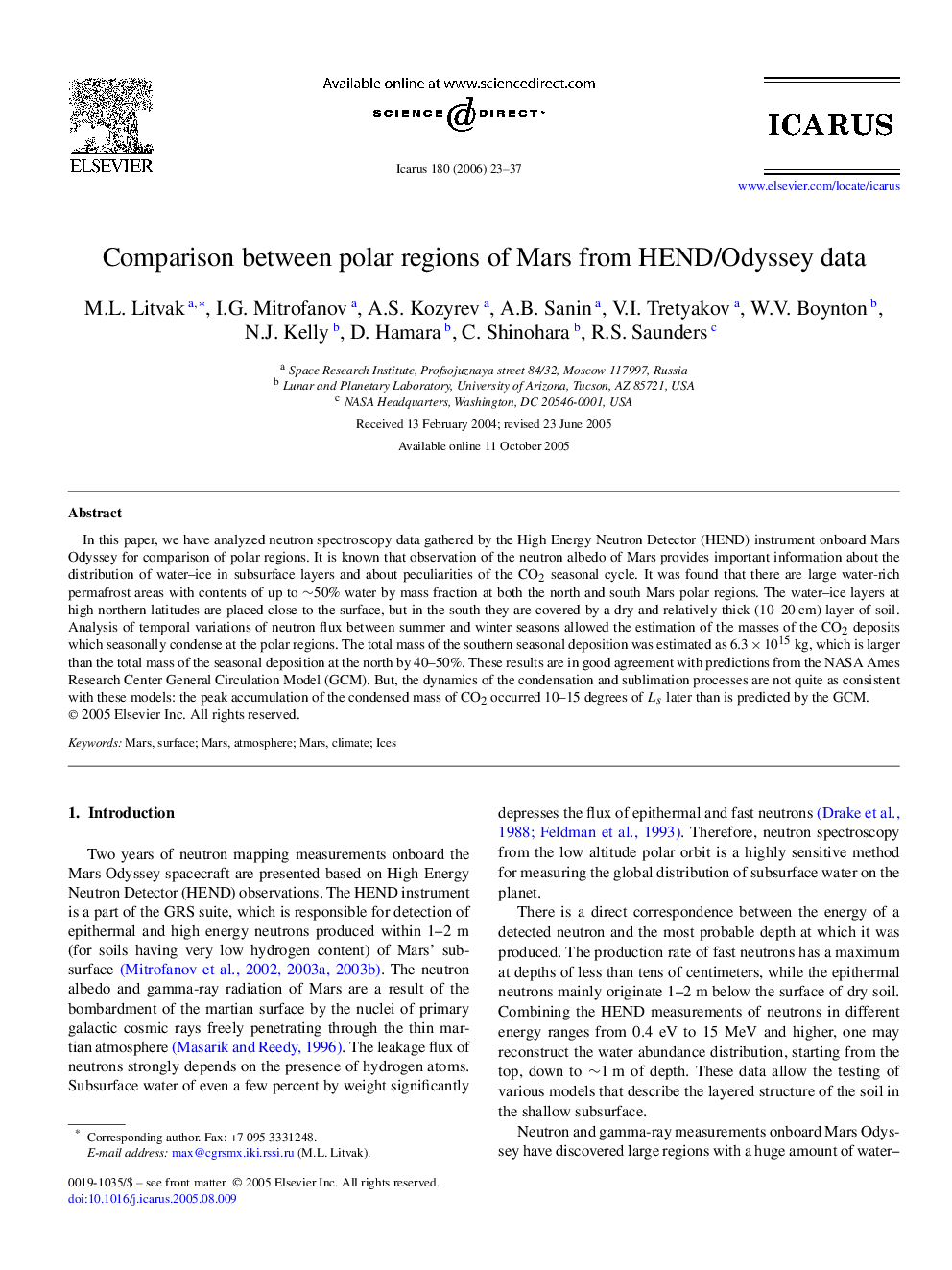| Article ID | Journal | Published Year | Pages | File Type |
|---|---|---|---|---|
| 1776016 | Icarus | 2006 | 15 Pages |
In this paper, we have analyzed neutron spectroscopy data gathered by the High Energy Neutron Detector (HEND) instrument onboard Mars Odyssey for comparison of polar regions. It is known that observation of the neutron albedo of Mars provides important information about the distribution of water–ice in subsurface layers and about peculiarities of the CO2 seasonal cycle. It was found that there are large water-rich permafrost areas with contents of up to ∼50% water by mass fraction at both the north and south Mars polar regions. The water–ice layers at high northern latitudes are placed close to the surface, but in the south they are covered by a dry and relatively thick (10–20 cm) layer of soil. Analysis of temporal variations of neutron flux between summer and winter seasons allowed the estimation of the masses of the CO2 deposits which seasonally condense at the polar regions. The total mass of the southern seasonal deposition was estimated as 6.3×1015 kg6.3×1015 kg, which is larger than the total mass of the seasonal deposition at the north by 40–50%. These results are in good agreement with predictions from the NASA Ames Research Center General Circulation Model (GCM). But, the dynamics of the condensation and sublimation processes are not quite as consistent with these models: the peak accumulation of the condensed mass of CO2 occurred 10–15 degrees of LsLs later than is predicted by the GCM.
